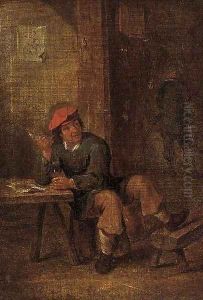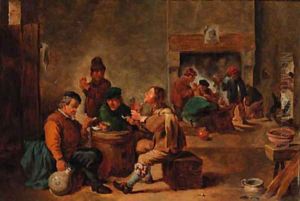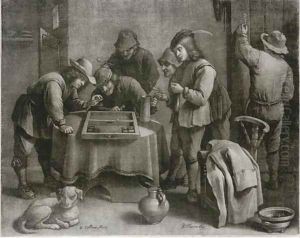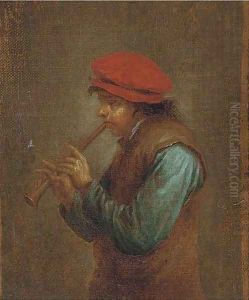David Teniers Paintings
David Teniers the Younger was a prolific and celebrated Flemish painter of the Baroque period, born on December 15, 1610, in Antwerp, then part of the Spanish Netherlands. He came from a family of artists; his father David Teniers the Elder was also a painter, and his brother Abraham Teniers followed in their footsteps. Under the tutelage of his father, Teniers the Younger developed his artistic skills early and became a master in the Antwerp Guild of St. Luke at the young age of 25.
Teniers is particularly known for his genre scenes, landscapes, and history paintings. He expertly depicted peasant life with a sense of humor and fine detail, often drawing on inspiration from the works of Pieter Brueghel the Elder, who was known for similar themes. Teniers's ability to paint with precision and to capture the nuances of light and shadow won him great acclaim. In addition to his genre works, Teniers also painted religious subjects, portraits, and still lifes.
His work gained the attention of important patrons, including Archduke Leopold Wilhelm of Austria, who was the governor of the Spanish Netherlands. Teniers worked as court painter and curator of the archduke's extensive art collection, and he played a significant role in organizing and cataloging the collection, which included major Italian Renaissance and Baroque works. His influence extended to the foundation of the Antwerp Academy of Art, an institution that would play a crucial role in the development of future Flemish artists.
Throughout his career, Teniers produced a vast number of works, which led to his wealth and social standing. His paintings were highly sought after by collectors throughout Europe, and his success allowed him to purchase a country estate, where he depicted the surrounding landscape in some of his paintings.
David Teniers the Younger passed away on April 25, 1690, in Brussels. His legacy continued through his sons who also became painters, and today, his works are held in high esteem and can be found in major museums around the world, including the Louvre in Paris, the Prado in Madrid, and the Kunsthistorisches Museum in Vienna.



